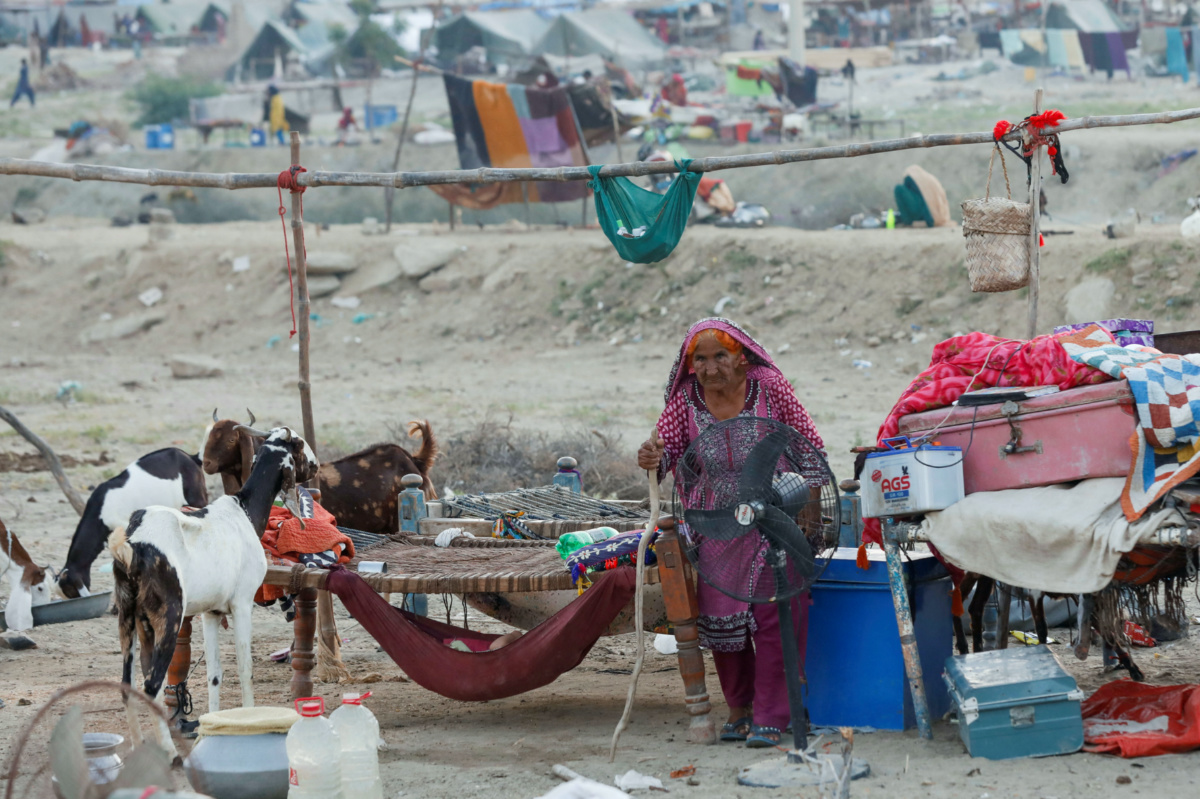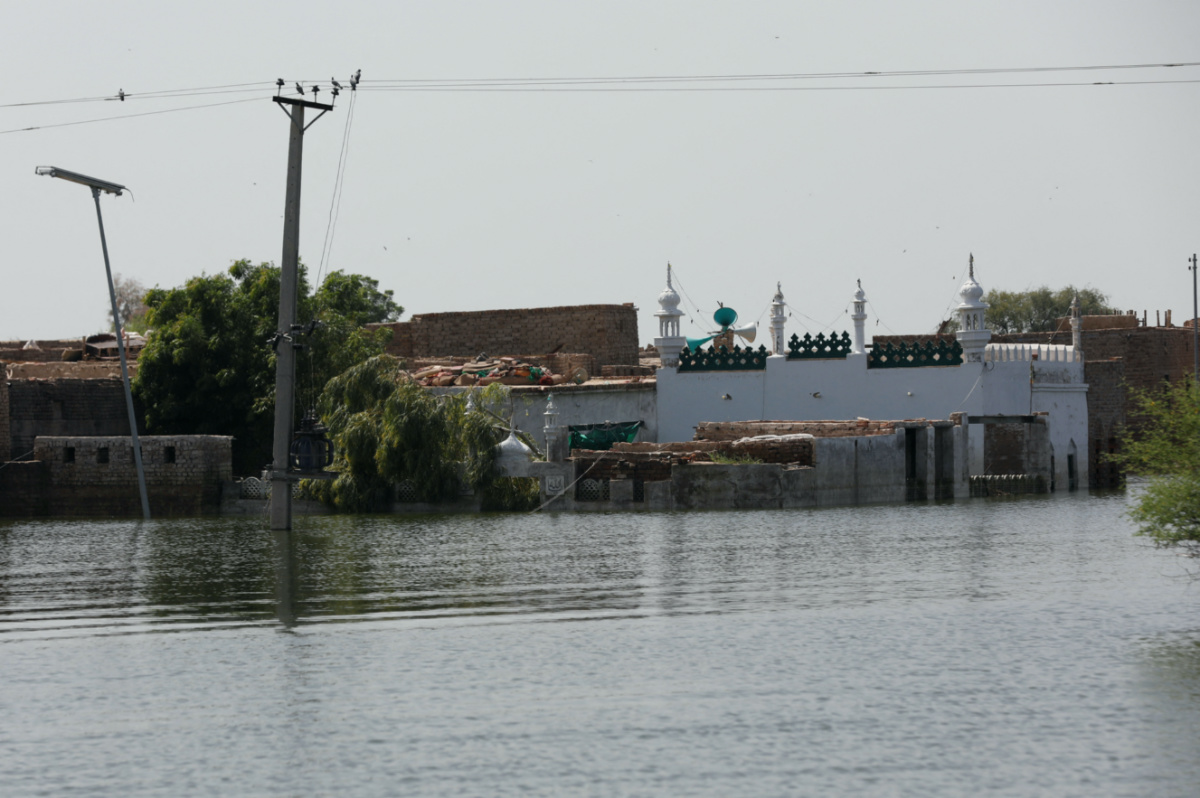Karachi/Islamabad, Pakistan
Reuters
Unprecedented floods that have submerged huge swathes of Pakistan have killed nearly 1,500 people, data showed on Thursday, as authorities said hundreds of thousands of people were still sleeping in the open air after the disaster.
The deluge, brought by record monsoon rains and glacial melt in northern mountains, has impacted 33 million people out of a population of 220 million, sweeping away homes, vehicles, crops and livestock in damage estimated at $US30 billion.

A woman, who became displaced, walks amid her family’s belongings while taking refuge in a camp, following rains and floods during the monsoon season in Sehwan, Pakistan, on 15th September. PICTURE: Reuters/Akhtar Soomro
The tally of the dead stands at 1,486, with about 530 children among them, the National Disaster Management Authority said, as it released its first country-wide total since 9th September.
Hundreds of thousands of people have been made homeless by flooding in the southern Sindh province, with many sleeping by the side of elevated highways to protect themselves from the water.
“We have been buying tents from all the manufacturers available in Pakistan,” Sindh’s chief minister Syed Murad Ali Shah said in a statement on Thursday.
Still, one-third of the homeless in Sindh don’t even have a tent to protect them from the elements, he said.
Over the last few weeks, authorities have built barriers to keep the flood waters out of key structures such as power stations and homes, while farmers who stayed to try and save their cattle have faced a new threat as fodder has begun to run out.
The government and the United Nations have blamed climate change for the surging waters in the wake of record-breaking summer temperatures.
Pakistan received 391 millimetres of rain, or nearly 190 per cent more than the 30-year average, in July and August. That climbed to 466 per cent for Sindh province, one of the worst-affected areas.
Aid flights from the United Arab Emirates and the United States arrived on Thursday, the foreign ministry said. The United Nations is assessing reconstruction needs.

A view shows submerged mosque and houses, following rains and floods during the monsoon season in Karampur village in Sehwan, Pakistan, on 15th September, 2022. PICTURE: Reuters/Akhtar Soomro
Meanwhile, scientists said on Tuesday that torrential monsoon that has submerged more than a third of Pakistan was a one in a hundred-year event likely made more intense by climate change.
In the hardest-hit areas of Sindh and Balochistan provinces, where August rainfall was seven to eight times heavier than usual, climate warming made average five-day maximum rainfall about 75 per cent more intense, according to a report by World Weather Attribution, an international research collaboration that teases out the role of climate change in extreme events.
Across the entire Indus River basin, the scientists found maximum rainfall was about 50 per cent heavier during a two-month monsoon period due to climate change.
They used 31 computer models in their analysis, combined with real-world observations.
WWA previously analysed the deadly heatwave that scorched India and Pakistan in March and April, with temperatures reaching 50 degrees Celsius. Climate change, they said, had made that heatwave 30 times more likely.
Their findings were less concrete for Pakistan’s heavy rains.
“The role of climate change in heatwaves is much larger than in extreme rainfall when it comes to [increasing] likelihood,” said WWA co-leader Friederike Otto, a climate scientist at Imperial College London.
We rely on our readers to fund Sight's work - become a financial supporter today!
For more information, head to our Subscriber's page.
It’s also trickier to parse out the role of climate change in the Pakistan floods, scientists said, because there have been so many drivers behind this year’s extremes.
Ongoing La Nina conditions – a global weather pattern that can affect ocean temperatures – combined with a negative dipole in the Indian Ocean – whereby rainfall is heaver in the eastern Indian Ocean – have been feeding the monsoon.
Existing vulnerabilities
While climate change may have made this year’s monsoon rains worse, the devastation they caused can’t be attributed to warming alone.
Scientists stressed the construction of homes and agricultural land on known flood plains, as well as inadequate infrastructure such as dams, had worsened the impacts of heavier rains.
“There have been significant drainage problems in the lower Indus Basin, even in non-flood years,” said geographer Ayesha Siddiqi at the University of Cambridge.






